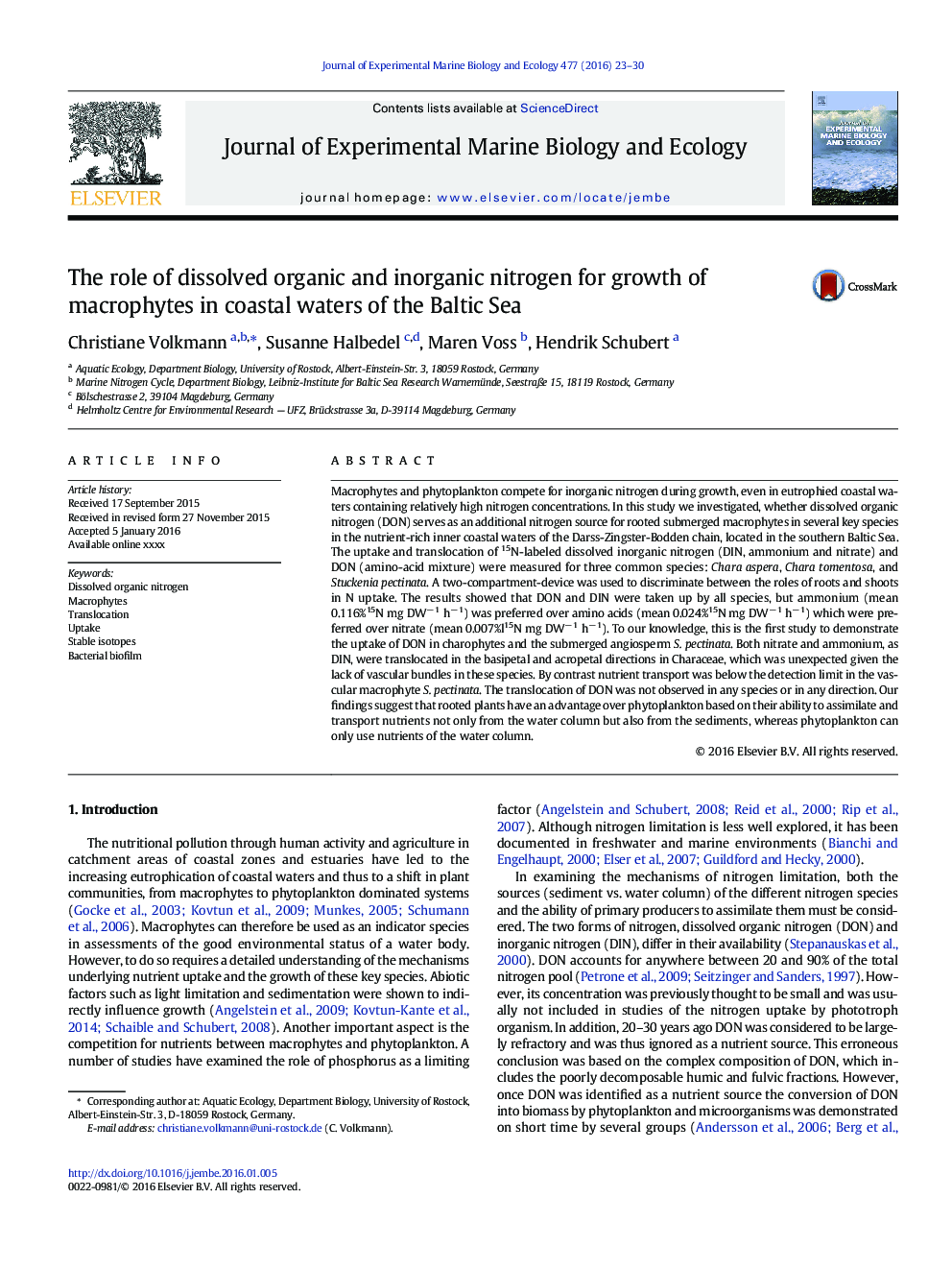| کد مقاله | کد نشریه | سال انتشار | مقاله انگلیسی | نسخه تمام متن |
|---|---|---|---|---|
| 6303746 | 1618398 | 2016 | 8 صفحه PDF | دانلود رایگان |
عنوان انگلیسی مقاله ISI
The role of dissolved organic and inorganic nitrogen for growth of macrophytes in coastal waters of the Baltic Sea
ترجمه فارسی عنوان
نقش نیتروژن آلی و معدنی محلول برای رشد ماکروفیدها در آبهای ساحلی دریای بالتیک
دانلود مقاله + سفارش ترجمه
دانلود مقاله ISI انگلیسی
رایگان برای ایرانیان
کلمات کلیدی
نیتروژن آلی حل شده، مکروفیدها، انتقال جذب، ایزوتوپهای پایدار، بیوفیلم باکتریایی،
موضوعات مرتبط
علوم زیستی و بیوفناوری
علوم کشاورزی و بیولوژیک
علوم آبزیان
چکیده انگلیسی
Macrophytes and phytoplankton compete for inorganic nitrogen during growth, even in eutrophied coastal waters containing relatively high nitrogen concentrations. In this study we investigated, whether dissolved organic nitrogen (DON) serves as an additional nitrogen source for rooted submerged macrophytes in several key species in the nutrient-rich inner coastal waters of the Darss-Zingster-Bodden chain, located in the southern Baltic Sea. The uptake and translocation of 15N-labeled dissolved inorganic nitrogen (DIN, ammonium and nitrate) and DON (amino-acid mixture) were measured for three common species: Chara aspera, Chara tomentosa, and Stuckenia pectinata. A two-compartment-device was used to discriminate between the roles of roots and shoots in N uptake. The results showed that DON and DIN were taken up by all species, but ammonium (mean 0.116%15N mg DWâ 1 hâ 1) was preferred over amino acids (mean 0.024%15N mg DWâ 1 hâ 1) which were preferred over nitrate (mean 0.007%l15N mg DWâ 1 hâ 1). To our knowledge, this is the first study to demonstrate the uptake of DON in charophytes and the submerged angiosperm S. pectinata. Both nitrate and ammonium, as DIN, were translocated in the basipetal and acropetal directions in Characeae, which was unexpected given the lack of vascular bundles in these species. By contrast nutrient transport was below the detection limit in the vascular macrophyte S. pectinata. The translocation of DON was not observed in any species or in any direction. Our findings suggest that rooted plants have an advantage over phytoplankton based on their ability to assimilate and transport nutrients not only from the water column but also from the sediments, whereas phytoplankton can only use nutrients of the water column.
ناشر
Database: Elsevier - ScienceDirect (ساینس دایرکت)
Journal: Journal of Experimental Marine Biology and Ecology - Volume 477, April 2016, Pages 23-30
Journal: Journal of Experimental Marine Biology and Ecology - Volume 477, April 2016, Pages 23-30
نویسندگان
Christiane Volkmann, Susanne Halbedel, Maren Voss, Hendrik Schubert,
